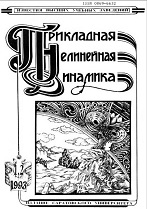|
This article is cited in 1 scientific paper (total in 1 paper)
MODELING OF GLOBAL PROCESSES. NONLINEAR DYNAMICS AND HUMANITIES
A catalytic model of service as applied to the case of a cyclic queue
A. Mustafina, A. Kantarbayevab
a Kazakh National Technical University after K. I. Satpaev
b Al-Farabi Kazakh National University
Abstract:
The research is devoted to the development of a deterministic («fluid») model for the open cyclical service system with abandonment and re-entry. The model is the system of coupled nonlinear ordinary differential equations for the following variables: (i) potential customers awaiting the service in the queue, (ii) served customers, (iii) busy servers, and (iv) free servers.
Aim of the work is to derive a minimal mathematical model of the service process treated as a generalized pseudochemical reaction with catalyst. The key feature of our approach is the vision of service provider as a kind of enzyme that shifts customers from the category of «waiting in a queue» to the category of «served». The catalyst-facilitator does not get used up in the process and can continue to act repeatedly. From the interdisciplinary perspective, both the biochemical reaction, and the consumer-provider interaction share a common trait: formation of a short-lived intermediate complex (enzyme-substrate and client-server, respectively). Having constructed a basic model of a service act, we verify its workability by the example of a cyclic service system. The formulated model of a cyclic queue is investigated by method of the qualitative theory of differential equations. The empirical fact that the average service time is much shorter than the characteristic waiting time makes the original system of equations singularly perturbed. Using the multiple-scale method the system is decomposed into slow and fast subsystems governing the respective dynamics of clients and servers. Results. Under the adiabatic approximation, the number of busy servers is shown to hastily instantly adapt to the momentary queue length (i.e. demand) in accordance with the well-known relationships for quasi-steady-state concentrations of enzyme kinetics. The physically feasible steady-state of the slow subsystem is found and proven to be asymptotically stable. A parametric analysis of the model’s steady state is performed. A practical conclusion has been drawn, that that as long as the arrival rate of new customers remains below a certain threshold value, the steady-state demand will keep relatively low regardless of the abandonment rate. The proposed formalism also allows us to derive analytically the clearing function-functional response of the output (number of served customers in a unit of time) to the current demand, and to suggest the conditions of its applicability. It is shown that the clearing function formula remains valid in all cases when the service time is shorter than the waiting time, and not necessarily only in the steady-state mode of operation.
Keywords:
queue, abandonment, re-entry, service time, waiting time, clearing function.
Received: 29.07.2019
Citation:
A. Mustafin, A. Kantarbayeva, “A catalytic model of service as applied to the case of a cyclic queue”, Izvestiya VUZ. Applied Nonlinear Dynamics, 27:5 (2019), 53–71
Linking options:
https://www.mathnet.ru/eng/ivp213 https://www.mathnet.ru/eng/ivp/v27/i5/p53
|

|




 Contact us:
Contact us: Terms of Use
Terms of Use
 Registration to the website
Registration to the website Logotypes
Logotypes








 Citation in format
Citation in format 
